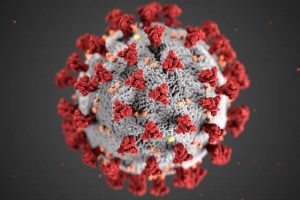DoH reports 60 new cases of BA.5 Omicron subvariant, PHL remains ‘low risk’

The Philippines tallied 60 new cases of the fast-spreading BA.5 Omicron subvariant from July 7 to 11, bringing the total to 293 cases, according to Department of Health (DoH) undersecretary Maria Rosario S. Vergeire.
While BA.5 is driving infections of coronavirus disease 2019 (COVID-19) in the US and Europe, the Philippines remains at “low risk” she added.
“Healthcare utilization remains at low risk in most areas, and severe and critical cases are at less than 1.5% among total hospital admissions nationally despite the increase in cases,” Dr. Vergeire said.
Based on sequencing results from July 7 to 11, 58 individuals from region 6 and one each from regions 11 and 12 tested positive for the BA.5 variant.
One was unvaccinated; the vaccination status of the remaining 59 is still being determined. The individuals’ exposure is likewise unknown and is still being verified. Forty-three of these are tagged as recovered, 14 are undergoing isolation, while the outcome of the remaining three is being verified.
Two additional BA.4 cases, meanwhile, were detected from the July 7 to 11 sequencing results. One was fully vaccinated; the other was unvaccinated. Both presented mild symptoms and have been tagged as recovered.
“People who are vaccinated and boosted can still get infected with BA.5,” Ms. Vergeire said. “The promise of the COVID-19 vaccines is not to block COVID-19, but to protect us from severe and critical infection and death.”
The number of severe and critical admissions at the national level has plateaued and has remained under 1,000 since mid-March.
“We saw a slight uptick in total admissions by 12%, and a decline of 1.8% in the total number of dedicated beds for COVID-19, which resulted in an increase in the utilization rate by 3%,” she said.
The country confirmed 10,271 additional coronavirus infections, or an average of 1,467 cases per day, in the past week.
Save for the National Capital Region, regions 4A and 6, and Cordillera Administrative Region (CAR), which have an average daily attack rate (DAR) of 1.3–4.44 cases per 100,000, all regions have an ADAR of 1 case per 100,000.
As of July 11, more than 71 million Filipinos have been fully vaccinated. More than 15.3 million individuals, moreover, have received their first booster. Close to a million have already received their second booster shots.
To increase booster uptake, the DoH is adopting a “settings approach.” “This means going to areas that people commonly [frequent], like schools, workplaces, and communities,” she said. “Within a community, we plan to include public spaces like markets and churches.”
The DoH also plans to seek out members of the vulnerable population who still haven’t completed their primary series through a mapping initiative.
“We encourage the public to wear masks, follow health and safety protocols, and encourage their loved ones to get vaccinated and boosted to minimize infections and control the increase in cases,” said Dr. Vergeire. — P. B. Mirasol




